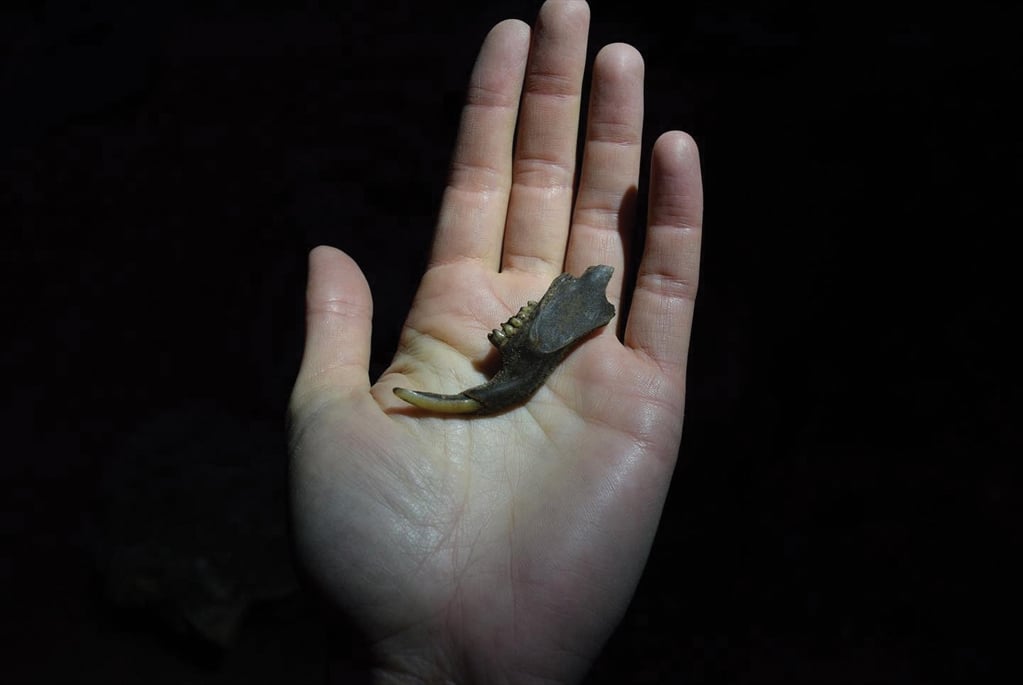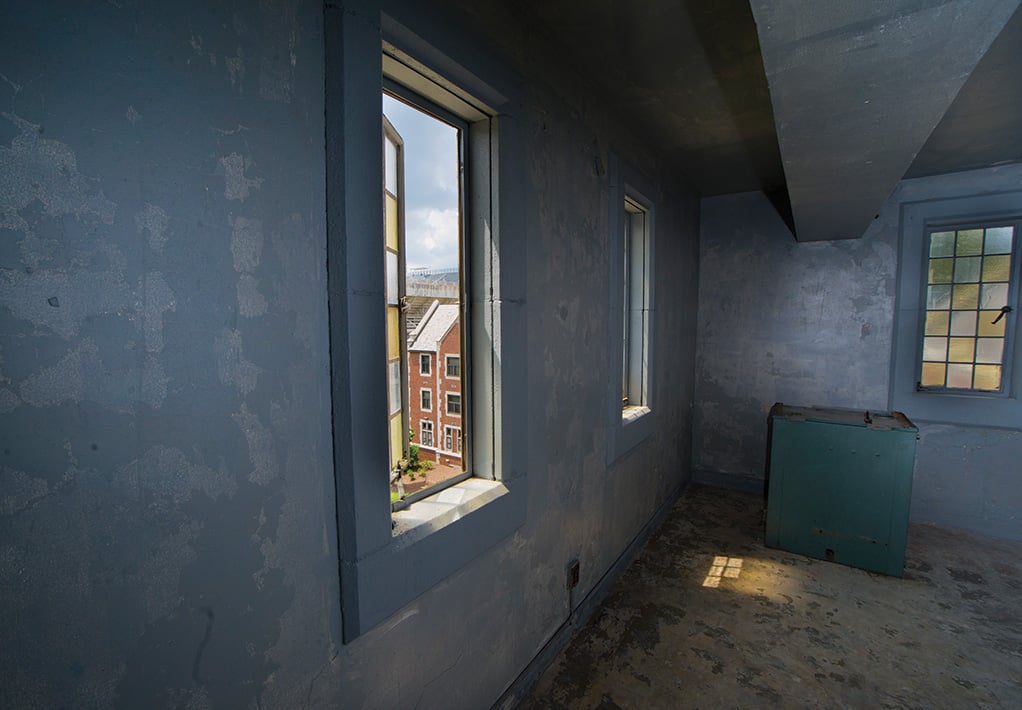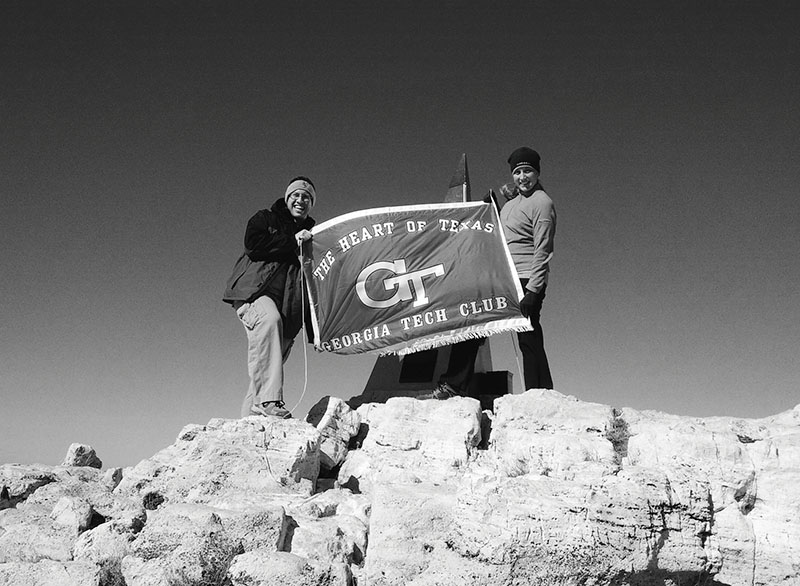Sky-High Success
By: Kristin Baird Rattini | Categories: Alumni Association News
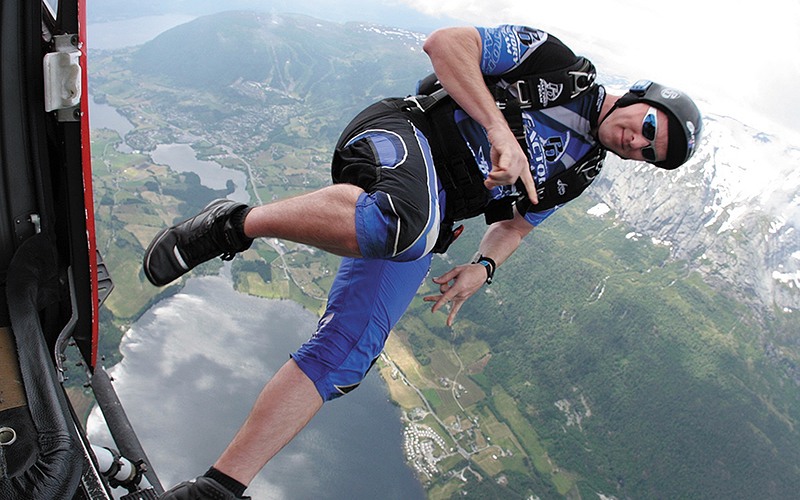
The sky is no limit for Ian Bobo, IE 94, whose extraordinary skydiving career has taken him from Tech's Sport Parachute Club to the International Skydiving Hall of Fame.
By: Kristin Baird Rattini
Photographs: Benjamin Forde/Phresh Air, JC Colclasure, and Francisco Neri
With more than 27,000 skydives (and counting), Ian Bobo would have seemed a shoo-in for his 2021 induction into the International Skydiving Hall of Fame based on his frequent-flier status alone. But his simultaneous world champion titles in two disciplines (a rarity) and innovative contributions to the field as a mentor, inventor, and educator over the past two decades place this alumnus of Georgia Tech and its Sport Parachute Club in the highest echelons of the sport.
"Get Ready: I am going to do this"
Bobo's upbringing in Georgia seemed tailor-made to send him skyward. His father, Christopher, an aerospace engineer who earned his master's degree from Tech in 1967, built experimental aircraft in their garage and shared his passion for radio-controlled planes with his son. His mother, Linda, was a dreamer. "She had her head in the clouds," he says. "She was a beautiful spirit who always encouraged me to go for my dreams."
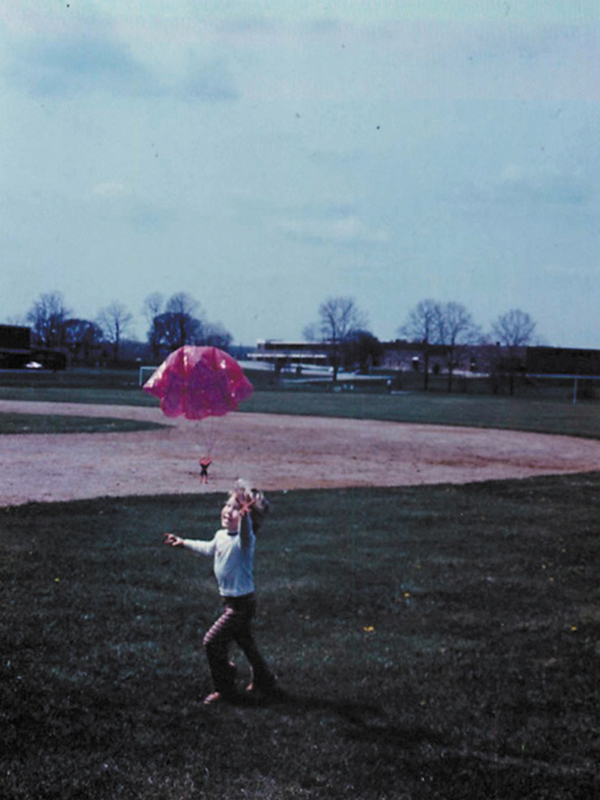
At age 16, Bobo saw a video of sky-divers at a local mall. "I didn't even know you could do that," he says. He brought a skydiving brochure home to his mom. "I told her, 'Get ready: I am going to do this when I turned 18,'" he recalls. On his 18th birthday, his mom gave him a gift certificate for his first jump.
"It was remarkable," he says. "You're two miles up when you exit the plane, so the Earth seems so far away. It feels more like floating than falling. You can move around in three dimensions like Superman, which was super appealing to me because of my love of aviation. It really tapped into a deep, carnal place in me. It was the perfect fit. When I landed, I knew I had to do it again."
He planned to do so at the U.S. Air Force Academy. But when a minor health condition would have restricted his training options at the academy to navigator rather than pilot, he instead enrolled at Georgia Tech. He didn't even realize that the school had a sport parachuting club until summer orientation, when he found the club's booth during an outdoor activity fair. "The members at the booth said, 'Stick around and watch; our guys are going to jump in here in a second,'" he says. "And there came the veterans in the club, dropping right in front of the student center. I thought, 'That is awesome.'"
Fast, Furious, and Physical
Bobo immediately went all-in with Tech's Sport Parachute Club. "When I learned it was a team sport, that had a huge appeal to me because I'd been a competitive athlete in team sports throughout high school," he says. Among his teammates he found not only a mentor in Chris Gay, EE 87, MS EE 90, who'd already logged more than 1,000 jumps, but a lifelong friend and business partner in Shannon Pilcher, BC 94. "All the things that starving college students do for food or clothing or drinking—we did to jump," Bobo says.
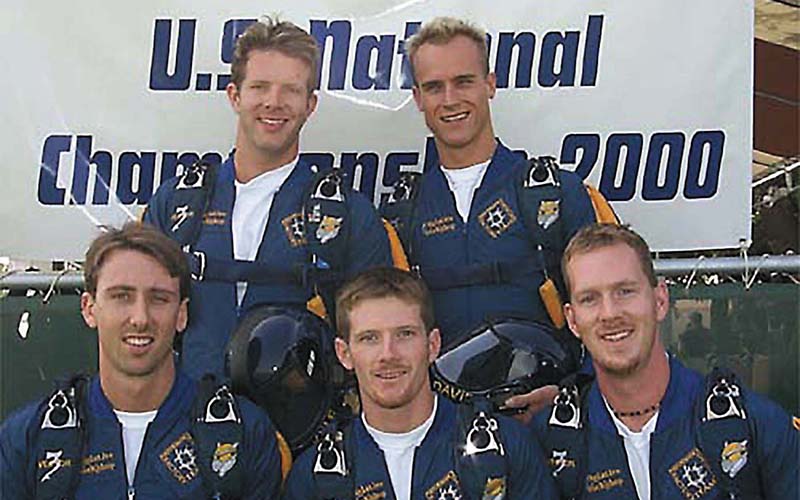
Tech's national championship-winning team. (Top L-R) Kyle Collins, Dave Van Greuningen; (Bottom L-R) Shannon Pilcher, Eric Taylor, Ian Bobo
He and Pilcher joined up with Kyle Collins, ME 95, MS AE 03, PhD AE 08, and Scott Webb, ME 95, and later Dave Van Greuningen, Arch 96, to compete in four-way formation skydiving. In this event, the quartet exits the aircraft at around 10,000 feet, linked together, and then have 35 seconds to complete as many formations in freefall as possible from a pre-set sequence before opening their parachutes. "It looks like a super fancy square dance where you're grabbing hands, spinning around, and flipping over each other in all of these three-dimensional movements," Bobo explains. "It's fast, furious, and physical. It's a 10-round event, so it's a huge mental challenge because you have to remember each of the different sequences and perform it correctly. It's the golden crown of formation skydiving, because it's the most intricate, most complex, and the fastest."
Their team took that crown, winning in the event at the Collegiate National Championships for three years in a row. What was the secret to their success? "We were four technically minded engineers, and the discipline is actually very technical," Bobo says. "We all liked each other and had strong interpersonal communication skills. We also had the same dream, which was to beat the military academy teams that had dominated the competition for years—including the Air Force Academy team that I could have been a part of."
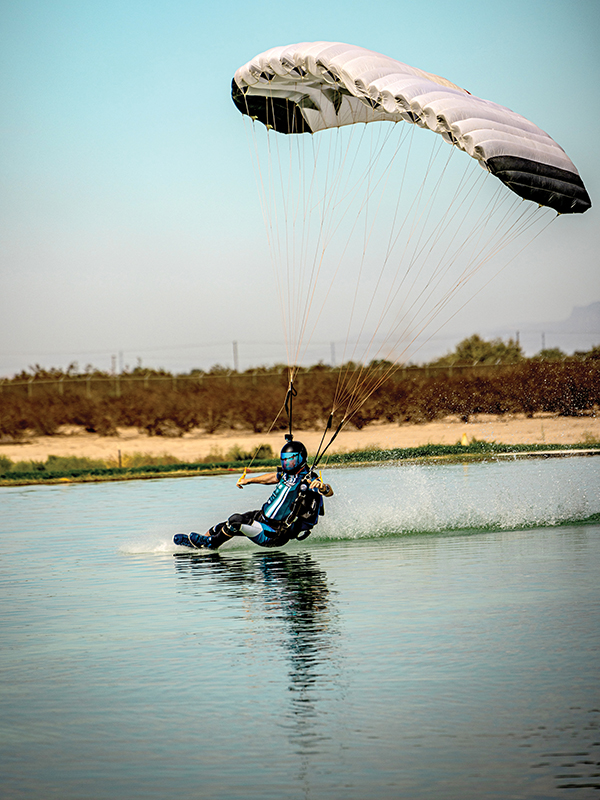
"The Formula 1 of Parachuting"
After winning the collegiate championships, "we already had our sights on the bigger prize: the pro circuit," Pilcher says. Within a few years after graduation, the quartet applied their Tech degrees—Bobo's is in industrial engineering—to secure jobs in DeLand, Florida, a skydiving hot spot. "It has amazing weather for skydiving year-round," Bobo says. "All of our mentors, all the national teams, trained there. And the manufacturing industry of parachuting is based around DeLand; probably 30 to 40 percent of skydiving equipment comes from this little town."
Bobo took a job as a systems analyst with Performance Designs, one of the biggest players in parachutes. "We were strategic," he says. "We trained on the weekends and got our feet in the door with these companies to become integral parts of the businesses professionally. Then we had the leverage to gradually train more and work less and eventually make the shift to full-time training and competing."
When Collins and Van Greuningen pivoted to other paths, Bobo and Pilcher recruited two new jumpers to round out their four-way team. They also started competing individually in a relatively new incarnation of skydiving, a three-event variation called canopy piloting.
"It's the Formula 1 of parachuting," Bobo says. Jumpers exit the aircraft at 5,000 feet and instantly open their chutes, which are much smaller, and generate speeds of over 80 miles per hour. They pull out of the dive inches above Earth's surface to enter a 200-foot horizontal course. Over three runs, they compete in speed, distance, and accuracy. "I really gravitated toward canopy piloting because of the precision and power and airspeed," Bobo says. "It's a fighter jet mentality."
In 2002, Bobo and Pilcher helped launch the Performance Design (PD) Factory Team, whose mission was to bring high-speed precision canopy flight to the masses in a way never before seen. Their team approach helped each member excel individually, as did their rigorous training: Bobo logged 900 to 1,200 dives each year.
The practice paid off on the podiums. Bobo became one of the few people in the world to win skydiving world championships in multiple disciplines: canopy piloting in 2005 and four-way formation skydiving (along with Pilcher) in 2006. "To be on top of both of those worlds within one year was overwhelming," he says. "I didn't ever imagine that was possible."
The PD Factory Team also launched a series of international expeditions—from Dubai to the Dolomites, Mont Blanc to the Norwegian fjords—soaring through breathtaking places that had never been flown before. His most memorable jump: the Grand Canyon. "We exited above the Earth and then flew into the Earth," he says. "It was a once-in-a-lifetime jump."
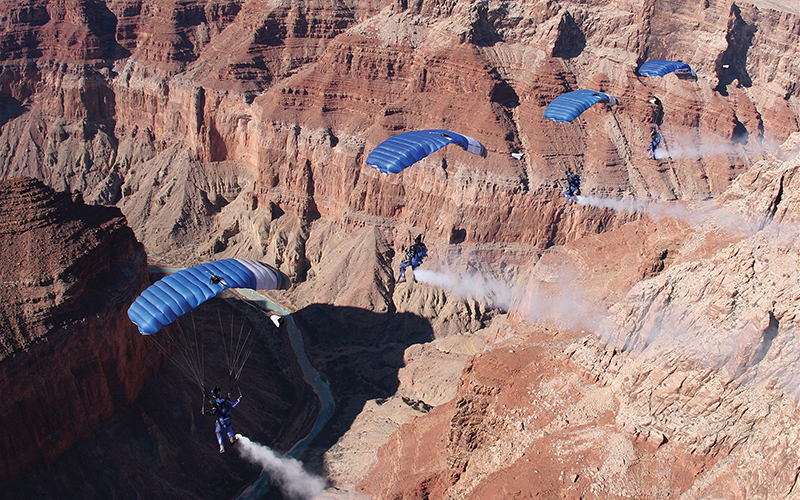
Taking Flight in the Education Arena
Beyond the competitive skydiving arena, Bobo was already making a significant impact on the sport. Using his industrial engineering skills, he invented the removable deployment system (RDS), which significantly reduces drag when a chute opens. "It has now been a standard piece of equipment for every competitor for years," he says.
In 2006, Bobo and Pilcher opened Flight-1, the first canopy-flight education and training company of its kind. It draws on the vast expertise of PD Factory Team members "to pioneer human flight through teamwork, technology, and training." With their Georgia Tech education as inspiration, they designed a graduated curriculum, with students progressing from 100-level foundational courses through 600-level one-on-one training seminars.
Flight-1 now has a cadre of about 50 instructors, who combined have more than 561 years of experience and over 400,000 jumps. The school operates in 12 countries, and its curriculum, translated into six languages, has been used by more than 25,000 students. "We use a team approach, so everyone is using the same curriculum," Bobo says. "That gets updated every two years by the team so that it continues to advance with the market and new technologies and teaching methods."
After Flight-1's sport curriculum caught the eye of elite military parachute units, Flight-1 Military was created to continuously raise and redefine the capabilities of the modern-day military canopy pilot. Around 1,500 clandestine military jumpers—from Navy SEALs to NATO forces—participate in 50 to 60 courses each year.
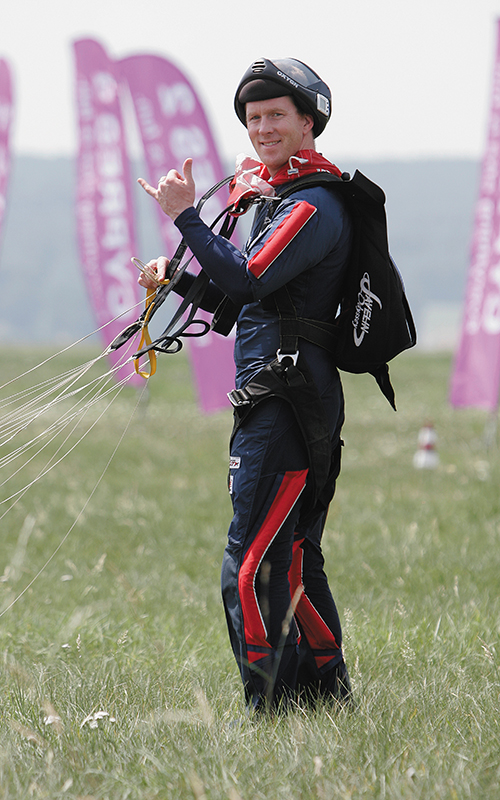
"It has been so rewarding to work with these military jumpers," Bobo says. "After 25 years of basically jumping out of airplanes for my own kicks, it suddenly took on this huge purpose. It is fulfilling to work with these people who are at the very top of what they do and that we've made a huge difference in their capability to do what they need to do and do it safely."
Pushing The Sport Ever Forward
Bobo's primary focus these days is on new technology that can take skydiving in new directions. "You wouldn't think of skydivers as conservative, but the sport kind of got stuck, with little advancement or progression," he says. He has eagerly championed the Mutant, a new supine-position harness container system for canopy piloting that is faster and has a low-drag profile. "It's a new way of flying that has extended my career, and I'm trying to get the rest of the competition to see that it's possible," he says. "It's the wave of the future."
While Bobo still logs around 300 jumps per year—many in the Mutant—he has shifted into more of a mentoring role within the PD Factory Team. "Having his voice of wisdom is a tremendous strength for the current team," Pilcher says. "We call him the glue. He makes sure we keep the relationships and trust strong, reminds us of our history, and keeps the team's vision alive."
It was Pilcher's nomination that secured Bobo's induction into the Skydiving Hall of Fame in 2021, where he joined fellow Tech teammate Chris Gay. "[Ian] has led teams and businesses within the sport to the highest echelons of success," Pilcher wrote, "and after 30 years of skydiving, he still loves to jump and spread the love."
